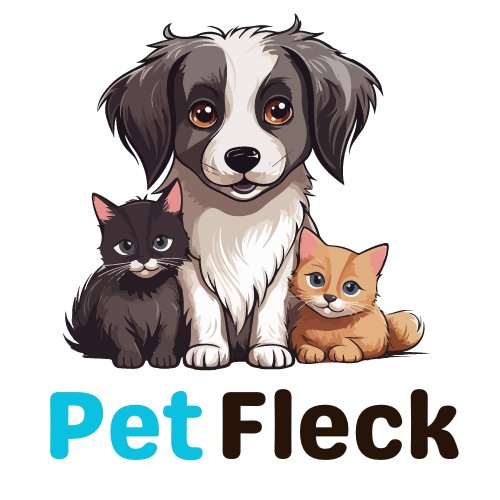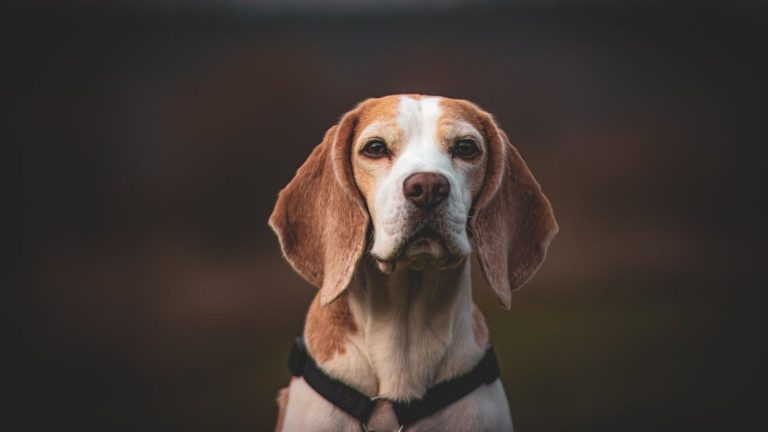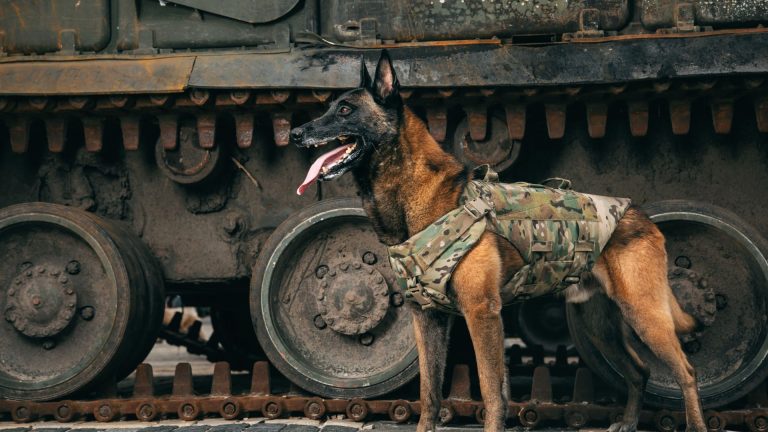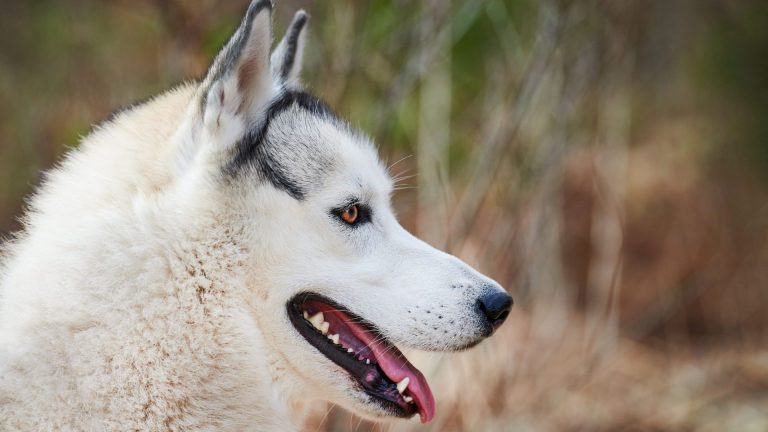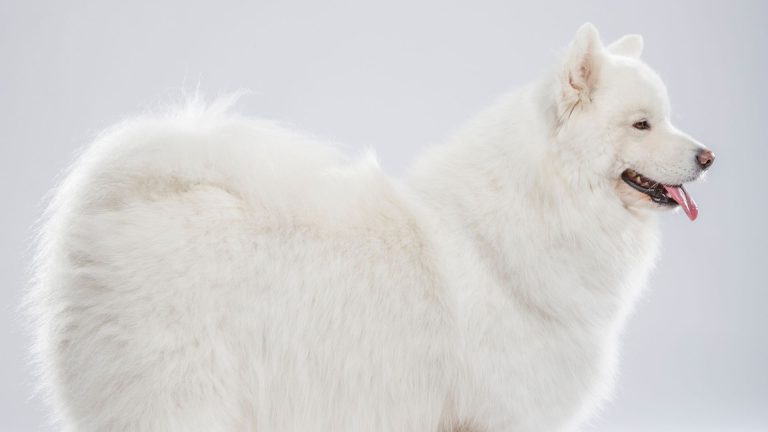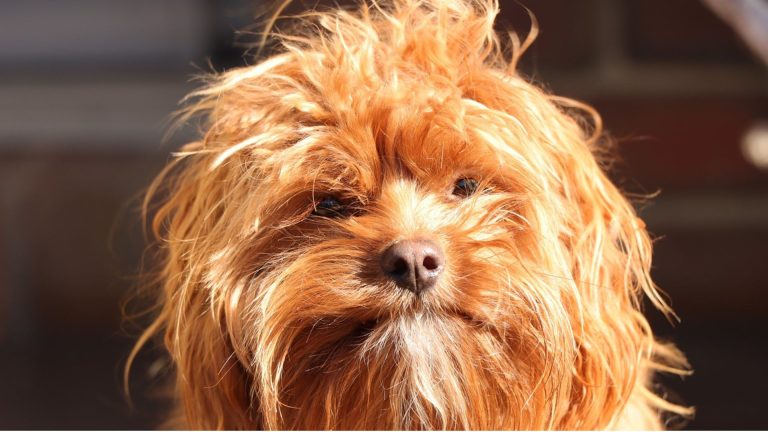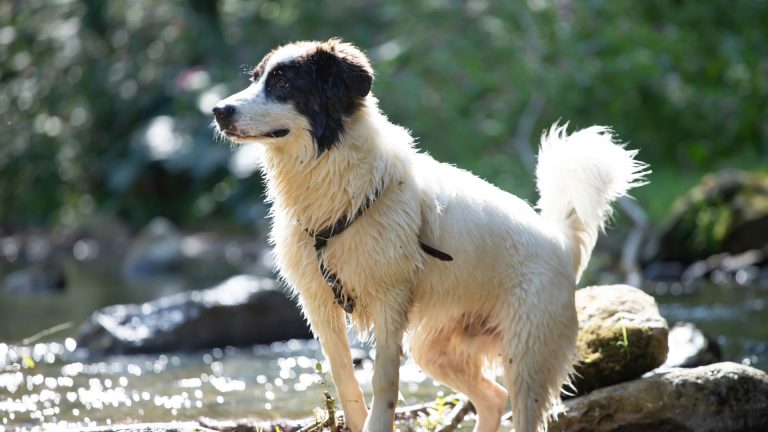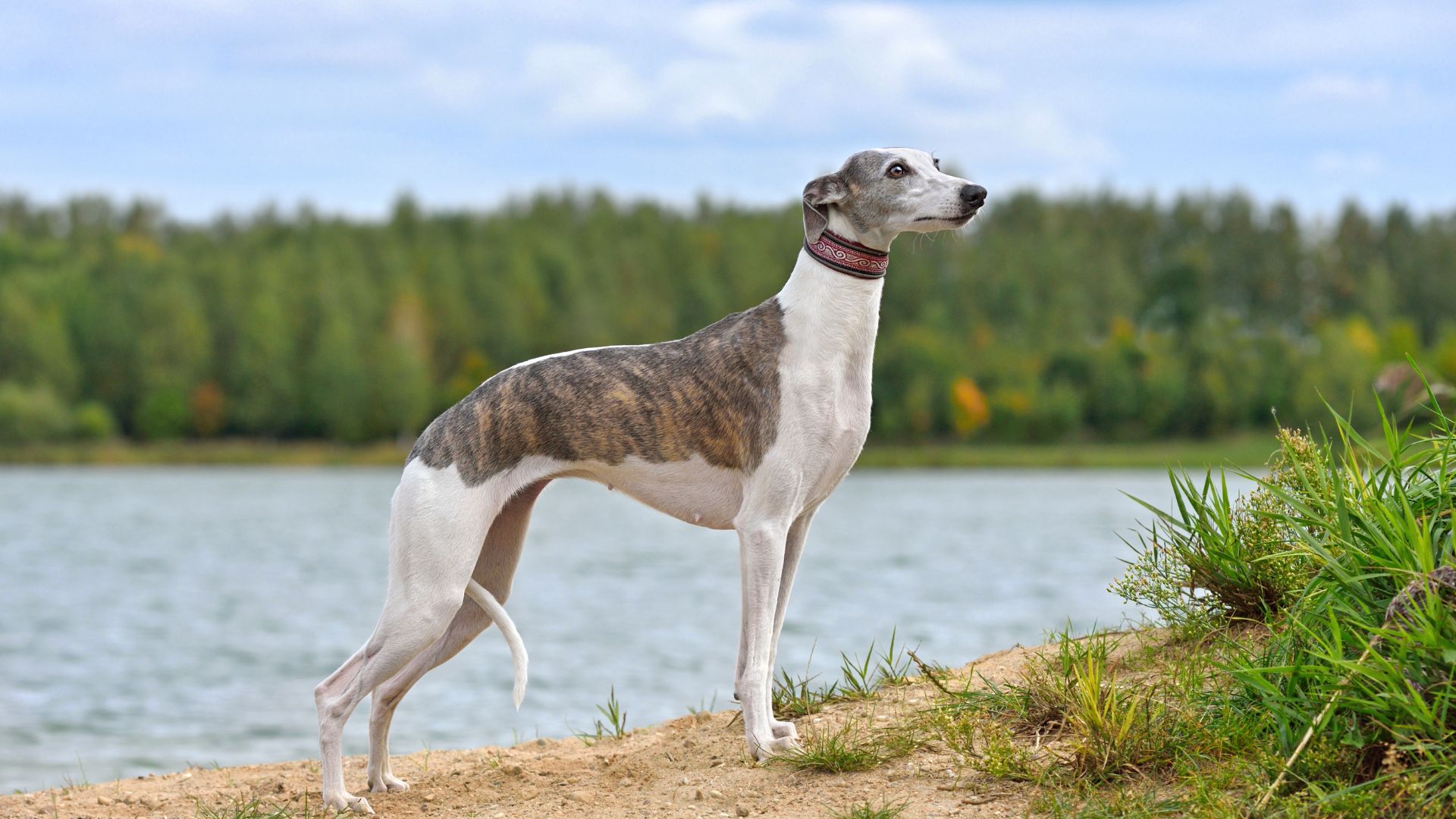
Contents
Tall skinny dog breeds are known for their elegance and grace. These breeds often have lean bodies, long legs, and a sleek appearance. They are not only visually striking but also possess unique characteristics that make them wonderful companions.
Choosing the right breed for your lifestyle is crucial. Tall skinny dogs require specific care, exercise, and environments. Understanding their needs will ensure a happy and healthy relationship with your pet.
In this article, we will explore the top tall skinny dog breeds. We will discuss their history, physical traits, temperament, and care requirements. This guide will help you find the perfect lean and elegant canine for your home.
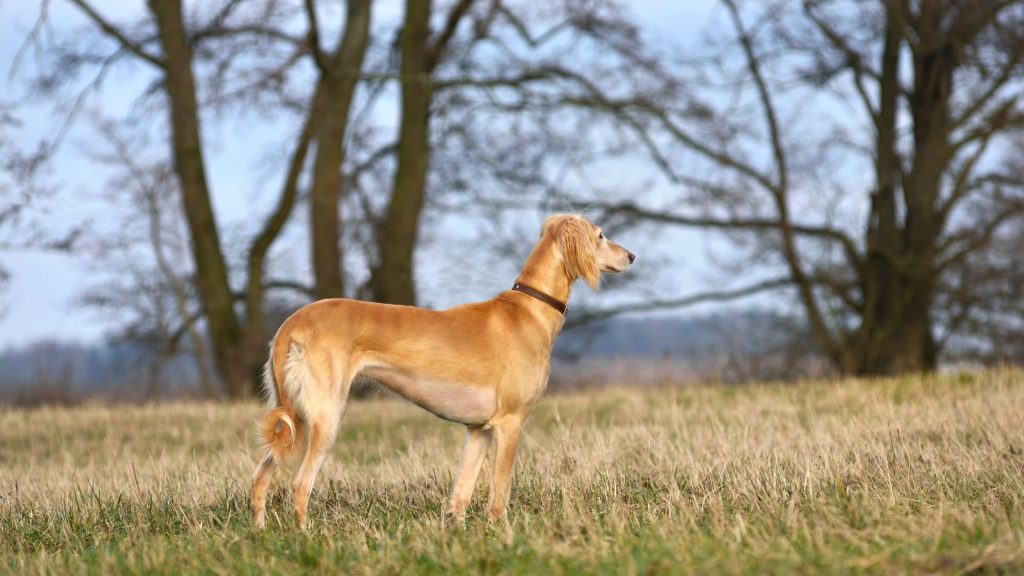
What Defines a Tall Skinny Dog Breed?
Tall skinny dog breeds are known for their slender and athletic build. These dogs typically have long legs, narrow bodies, and short, smooth coats. Their physical appearance gives them an elegant and graceful look. Examples of these breeds include the Greyhound, Whippet, and Saluki. These dogs are often built for speed and agility, making them excellent runners and athletes.
Benefits of Owning a Tall Skinny Dog
Owning a tall skinny dog comes with several benefits. These dogs are generally very active and enjoy regular exercise, which can encourage their owners to stay active as well. Their sleek coats require minimal grooming, making them low-maintenance in terms of grooming needs. Additionally, tall skinny dogs tend to have gentle and affectionate temperaments, making them great companions. Their lean bodies also mean they often take up less space, despite their height, making them suitable for smaller homes or apartments.
Common Misconceptions About These Breeds
There are several misconceptions about tall skinny dog breeds. One common myth is that they are fragile and prone to injury. While they do have a delicate appearance, these breeds are typically robust and resilient. Another misconception is that they require extensive grooming due to their elegant looks. In reality, most tall skinny breeds have low-maintenance coats. Some people also believe these dogs are aloof or uninterested in human interaction. However, many tall skinny breeds are affectionate and form strong bonds with their owners. Lastly, it’s often thought that they need excessive exercise. While they do enjoy regular activity, they are also content to relax and lounge around the house.
Understanding these characteristics, benefits, and misconceptions can help potential owners make an informed decision. Tall skinny dog breeds offer unique advantages and can make wonderful, loyal companions.
Top Tall Skinny Dog Breeds
Tall skinny dog breeds are known for their elegance and agility. Each breed has unique characteristics that make them special companions.
Greyhound
The Greyhound is one of the oldest dog breeds, with origins tracing back over 4,000 years to ancient Egypt. They were revered by pharaohs and often depicted in ancient art. These dogs were initially bred for hunting due to their incredible speed and agility.

Physically, Greyhounds are known for their long, slender bodies, deep chests, and narrow heads. They have short, smooth coats that come in various colors, including black, white, fawn, and brindle. Their long legs and flexible spines enable them to reach speeds of up to 45 miles per hour, making them the fastest dog breed.
In terms of temperament, Greyhounds are gentle, friendly, and affectionate. They are known for their calm demeanor and are often described as “couch potatoes” despite their athletic build. They tend to be good with children and other pets, making them excellent family dogs.
Caring for a Greyhound involves regular exercise, such as daily walks or runs in a secure area. Despite their athletic nature, they do not require excessive exercise and are content with moderate activity. Their short coats need minimal grooming, usually just a weekly brush to remove loose hair. Greyhounds are sensitive to temperature extremes, so they should be kept indoors during very hot or cold weather. Regular veterinary check-ups and a balanced diet will help maintain their health and longevity.
Whippet
The Whippet originated in England during the 19th century. It was bred from Greyhounds and other sighthounds to create a smaller, agile dog for hunting rabbits and racing. They quickly became popular among working-class people for their speed and hunting prowess.
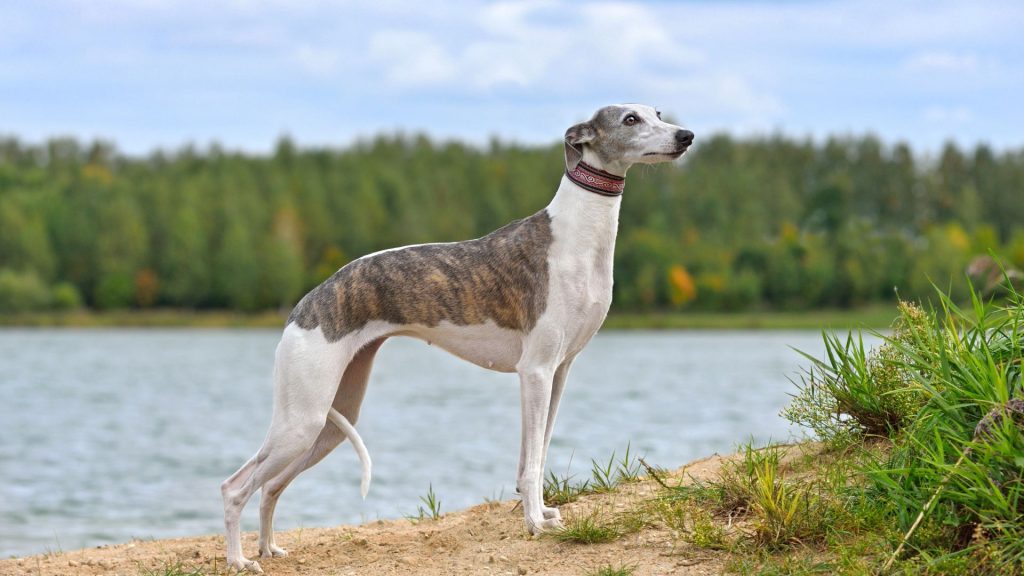
Physically, Whippets are slender and muscular, with a similar build to Greyhounds but on a smaller scale. They have short, smooth coats that come in a variety of colors and patterns, including black, white, fawn, and brindle. Whippets can reach speeds of up to 35 miles per hour, making them one of the fastest dog breeds relative to their size.
Whippets are known for their gentle and affectionate nature. They are friendly and get along well with children and other pets. They enjoy human companionship and are often described as velcro dogs due to their tendency to stay close to their owners. Despite their high energy during play, they are calm and relaxed indoors.
Caring for a Whippet involves regular exercise, such as daily walks or play sessions in a secure, fenced area. They enjoy sprinting but do not require extensive exercise. Their short coats are low-maintenance, needing only occasional brushing to remove loose hair. Whippets are sensitive to cold weather and may need a sweater in cooler climates. Regular veterinary care, a balanced diet, and a safe, loving environment will ensure they thrive.
Saluki
The Saluki is an ancient breed, with origins dating back over 5,000 years to the Middle East. They were prized by nobility and used for hunting game in desert regions. Often referred to as the “royal dog of Egypt,” they are frequently depicted in ancient artifacts and tombs.

Salukis are characterized by their elegant and slim build, with long legs and a narrow, deep-chested body. They have a smooth, silky coat that can be either short or feathered on the ears, tail, and legs. Coat colors vary widely, including white, cream, fawn, gold, red, and black. Their large, expressive eyes and graceful appearance contribute to their regal look.
Salukis are known for their gentle, reserved temperament. They are affectionate with their families but can be aloof with strangers. These dogs are independent and intelligent, often exhibiting a cat-like demeanor. Despite their hunting background, they are quiet and calm indoors, making them suitable for a variety of living environments.
Caring for a Saluki involves regular exercise, such as daily walks or runs in a secure area. They have high energy levels outdoors but are typically relaxed indoors. Their smooth coat requires minimal grooming, though feathered varieties may need occasional brushing. Salukis are sensitive to cold weather and should be protected in cooler climates. Regular veterinary check-ups, a balanced diet, and a secure, loving environment are essential for their well-being.
Afghan Hound
The Afghan Hound has a rich history, originating in the mountainous regions of Afghanistan thousands of years ago. They were bred by nomadic tribes for hunting large game, such as deer and leopards. Their long, flowing coats provided protection against harsh weather conditions, and their speed and agility made them excellent hunters.
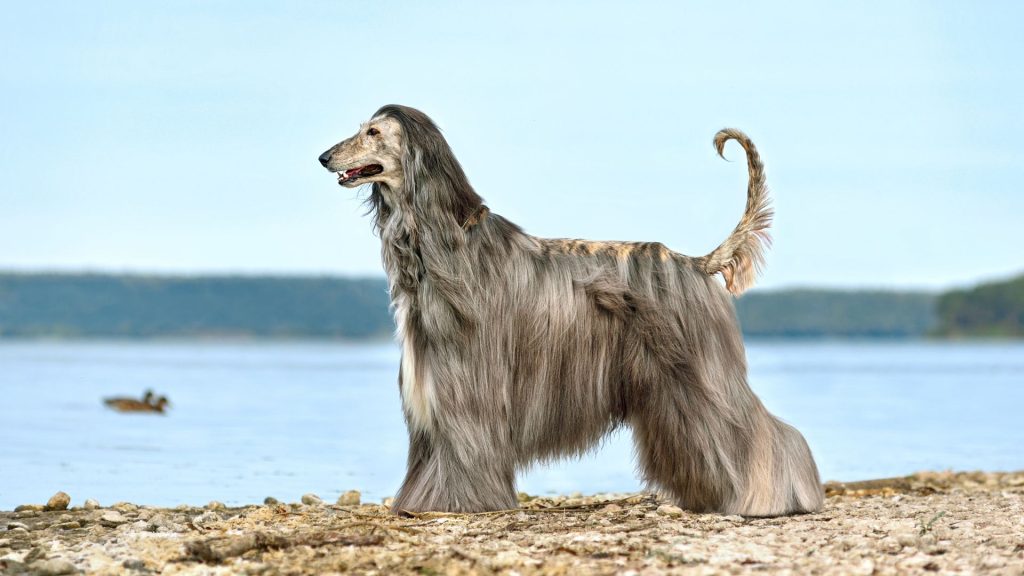
Afghan Hounds are known for their distinctive appearance, featuring a long, silky coat that comes in various colors, including black, white, fawn, and brindle. They have a narrow, elegant head, with a long topknot of hair, and their bodies are slender yet muscular. Their large, expressive eyes and dignified stance add to their regal presence.
In terms of temperament, Afghan Hounds are independent, dignified, and sometimes aloof. They can be affectionate with their families but often remain reserved with strangers. These dogs are intelligent and can be somewhat stubborn, which can make training a challenge. Despite their independent nature, they are playful and enjoy activities that allow them to run and explore.
Caring for an Afghan Hound requires regular exercise to keep them physically and mentally stimulated. Daily walks or runs in a secure area are essential. Their long, silky coat demands frequent grooming, including brushing several times a week to prevent tangles and matting. Regular baths are also necessary to maintain the coat’s condition. Afghan Hounds are sensitive to temperature extremes and should be kept indoors during very hot or cold weather. Regular veterinary care, a balanced diet, and a secure, loving environment will help ensure they thrive.
Borzoi
The Borzoi, also known as the Russian Wolfhound, originated in Russia in the 17th century. They were bred by the Russian aristocracy for hunting wolves and other large game. Their name, “Borzoi,” means “swift” in Russian, reflecting their speed and agility in the field.
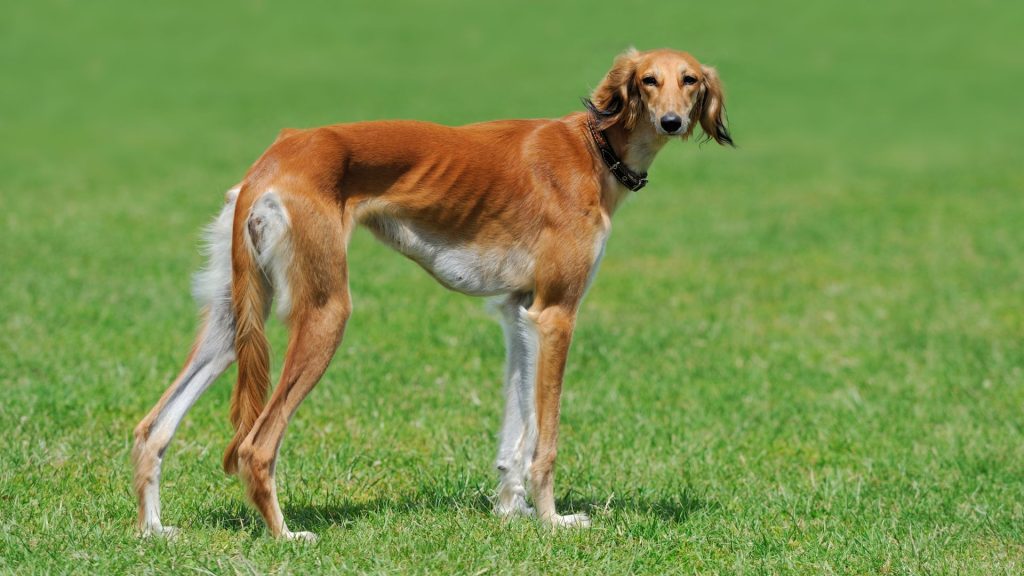
Physically, Borzois are tall and graceful with a sleek, elongated body. They have a narrow head, long neck, and deep chest. Their coats are long, silky, and slightly wavy, coming in a variety of colors, including white, black, tan, and brindle. Borzois have a distinctive, elegant appearance that is both powerful and refined.
Borzois are known for their calm and gentle temperament. They are typically reserved and quiet, both indoors and outdoors. Despite their hunting background, they are affectionate with their families and form strong bonds. They can be somewhat aloof with strangers, reflecting their independent nature. Borzois are intelligent and sensitive, which can make them responsive to gentle training methods.
Caring for a Borzoi involves regular exercise, such as daily walks or runs in a secure area. They enjoy physical activity but are also content to relax at home. Their long coats require regular grooming to prevent tangles and matting, including brushing several times a week and occasional baths. Borzois are sensitive to temperature extremes and should be protected in hot or cold weather. Regular veterinary care, a balanced diet, and a safe, loving environment are essential for their well-being.
Ibizan Hound
The Ibizan Hound hails from the Balearic Islands of Spain, with a history that dates back over 5,000 years. They are believed to be descended from the ancient Egyptian hunting dogs brought to the islands by Phoenician traders. These dogs were primarily used for hunting rabbits and other small game, prized for their agility and keen sense of smell.
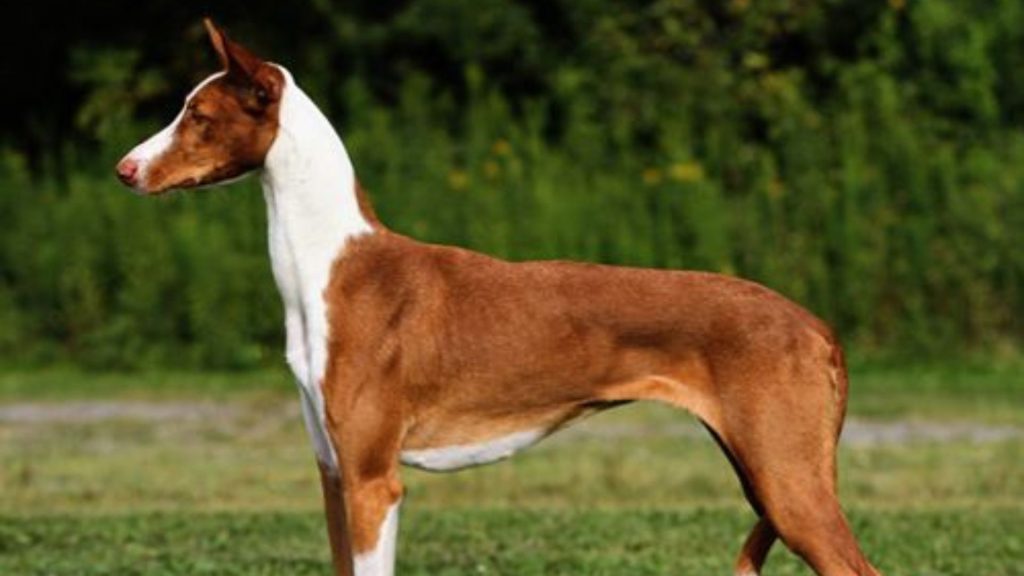
Ibizan Hounds are tall and slender, with a distinctive, deer-like appearance. They have long, narrow heads, large ears that stand erect, and elegant, athletic bodies. Their coats can be short, wire-haired, or long, and come in colors such as white, red, or a combination of both. Their expressive eyes and agile build give them a unique and striking look.
Temperament-wise, Ibizan Hounds are intelligent, playful, and affectionate. They are known for their friendly and outgoing nature, getting along well with children and other pets. These dogs are alert and make good watchdogs, though they are not aggressive. They have a strong prey drive due to their hunting background, so they may be inclined to chase smaller animals.
Caring for an Ibizan Hound involves regular exercise, as they are energetic and enjoy running and playing. Daily walks and playtime in a secure area are essential. Their coats are relatively low-maintenance, requiring only occasional brushing to keep them clean and healthy. Ibizan Hounds are generally healthy, but regular veterinary check-ups, a balanced diet, and a safe environment are important for their well-being. They are sensitive to cold weather and may need a sweater in cooler climates. Proper care and attention will help these graceful and agile dogs thrive as beloved family companions.
Pharaoh Hound
The Pharaoh Hound is an ancient breed, believed to have originated in Egypt over 5,000 years ago. They were used for hunting small game and depicted in ancient Egyptian art and hieroglyphs. The breed was later brought to Malta, where it became the national dog and was known as the Kelb tal-Fenek.
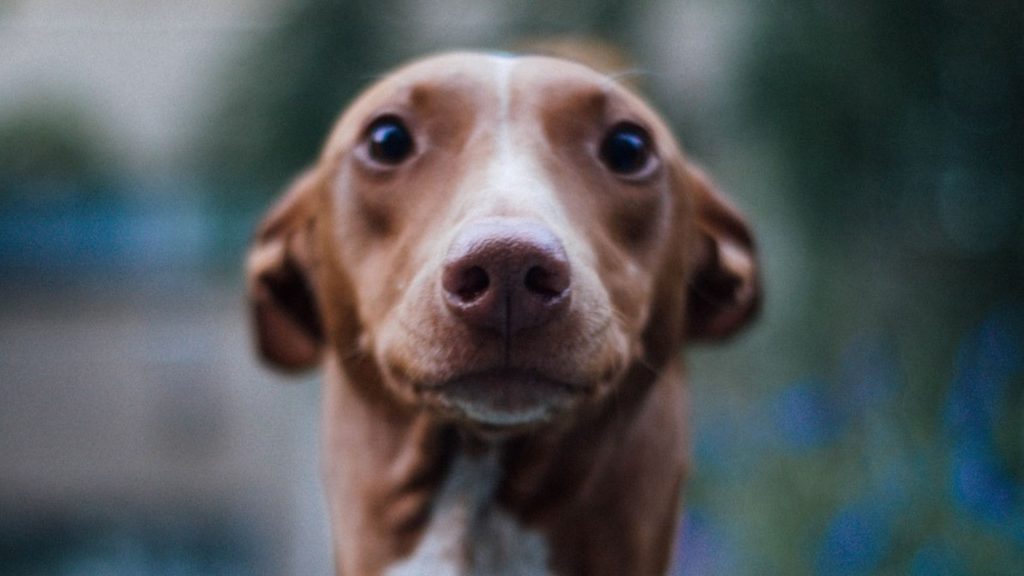
Pharaoh Hounds are medium-sized, slender, and athletic, with a sleek, aerodynamic build. They have a distinctive, noble appearance with large, erect ears, a long, graceful neck, and a streamlined body. Their short, glossy coat comes in shades of tan or chestnut, often with white markings on the chest, toes, and tail tip. They are known for their unique ability to blush, turning a rosy color around the nose and ears when excited or happy.
In terms of temperament, Pharaoh Hounds are intelligent, friendly, and playful. They are affectionate with their families and get along well with children and other dogs. However, they can be reserved with strangers and have a strong prey drive, making them prone to chasing smaller animals. These dogs are known for their keen sense of sight and smell, making them excellent hunters.
Caring for a Pharaoh Hound involves regular exercise to keep them physically and mentally stimulated. They enjoy activities like running, agility training, and playing fetch. Their short coat requires minimal grooming, just occasional brushing to remove loose hair and keep it shiny. Pharaoh Hounds are generally healthy but should have regular veterinary check-ups, a balanced diet, and a loving environment. They are sensitive to cold weather and may need a sweater in cooler climates. Proper care and attention will help these elegant and agile dogs thrive as loyal and loving companions.
Choosing the Right Breed for You
When selecting a tall skinny dog breed, consider several factors to ensure the dog fits well with your lifestyle. Evaluate the dog’s exercise needs, grooming requirements, and overall temperament. Some breeds may require more physical activity than others, while some may need frequent grooming. Also, consider the dog’s size and space needs. Tall skinny dogs can thrive in both apartments and houses if their exercise needs are met. Think about any allergies you or your family members may have, as some breeds may be more suitable than others.
Matching Breed Characteristics with Owner Lifestyle
It’s crucial to match the dog’s characteristics with your lifestyle. For example, if you have an active lifestyle and enjoy outdoor activities, breeds like the Greyhound or Whippet might be ideal due to their love for running and exercise. If you prefer a more relaxed lifestyle but still want a tall skinny breed, the Borzoi or Saluki may be better, as they enjoy lounging around the house when not exercising.
Consider your experience with dogs. Some breeds, like the Afghan Hound, may be more challenging to train due to their independent nature and may be better suited for experienced owners. On the other hand, breeds like the Whippet are known for being easier to train and might be more suitable for first-time owners.
Additionally, consider the dog’s interaction with children and other pets. Breeds like the Pharaoh Hound and Ibizan Hound are known for their friendly and playful nature, making them good choices for families with children.
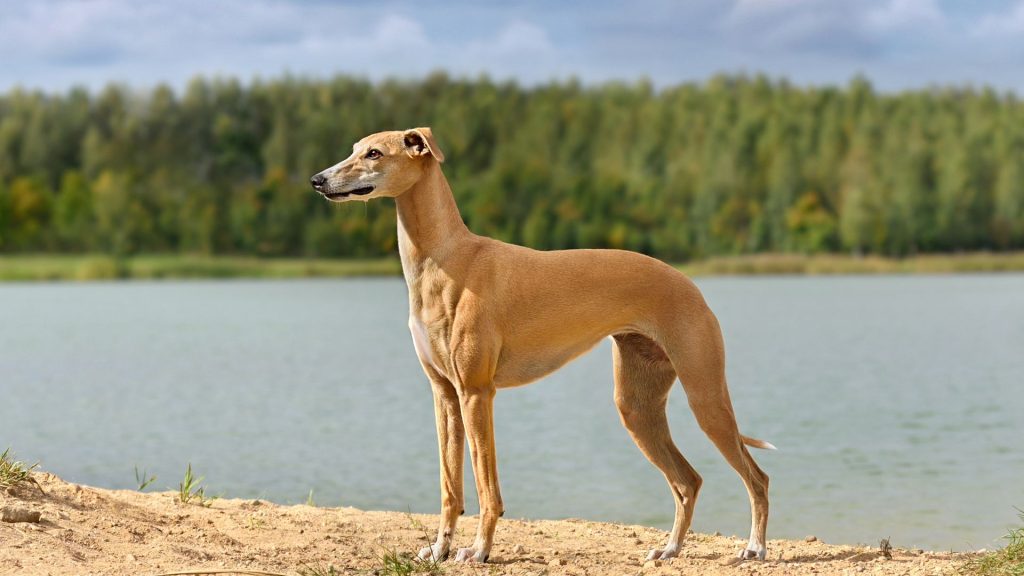
Tips for First-Time Owners of Tall Skinny Dogs
- Research Thoroughly: Learn about the specific needs and characteristics of the breed you’re interested in. Understand their exercise, grooming, and dietary requirements.
- Provide Regular Exercise: Tall skinny dogs are often high-energy breeds that require regular physical activity. Ensure you can commit to daily walks, runs, or playtime in a secure area.
- Invest in Training: Enroll in obedience classes to help with training and socialization. These breeds can be independent and sometimes stubborn, so consistent, positive reinforcement training is essential.
- Create a Safe Environment: Ensure your home is safe and secure. These dogs can be agile and may escape if not properly contained. A secure yard or a commitment to on-leash activities is crucial.
- Health and Grooming: Schedule regular veterinary check-ups and maintain their grooming needs. While many tall skinny breeds have low-maintenance coats, they still require basic grooming and health care.
- Be Patient and Consistent: Tall skinny dogs can be sensitive and may take time to adjust to new environments and training. Patience and consistency are key to building a strong bond and ensuring a well-behaved pet.
By carefully considering these factors and following these tips, you can choose the right tall skinny dog breed that will fit seamlessly into your lifestyle, providing you with a loyal and loving companion.
Choosing the Right Breed for You
When selecting a tall skinny dog breed, consider several factors to ensure the dog fits well with your lifestyle. Evaluate the dog’s exercise needs, grooming requirements, and overall temperament. Some breeds may require more physical activity than others, while some may need frequent grooming. Also, consider the dog’s size and space needs. Tall skinny dogs can thrive in both apartments and houses if their exercise needs are met. Think about any allergies you or your family members may have, as some breeds may be more suitable than others.
Matching Breed Characteristics with Owner Lifestyle
It’s crucial to match the dog’s characteristics with your lifestyle. For example, if you have an active lifestyle and enjoy outdoor activities, breeds like the Greyhound or Whippet might be ideal due to their love for running and exercise. If you prefer a more relaxed lifestyle but still want a tall skinny breed, the Borzoi or Saluki may be better, as they enjoy lounging around the house when not exercising.
Consider your experience with dogs. Some breeds, like the Afghan Hound, may be more challenging to train due to their independent nature and may be better suited for experienced owners. On the other hand, breeds like the Whippet are known for being easier to train and might be more suitable for first-time owners.
Additionally, consider the dog’s interaction with children and other pets. Breeds like the Pharaoh Hound and Ibizan Hound are known for their friendly and playful nature, making them good choices for families with children.
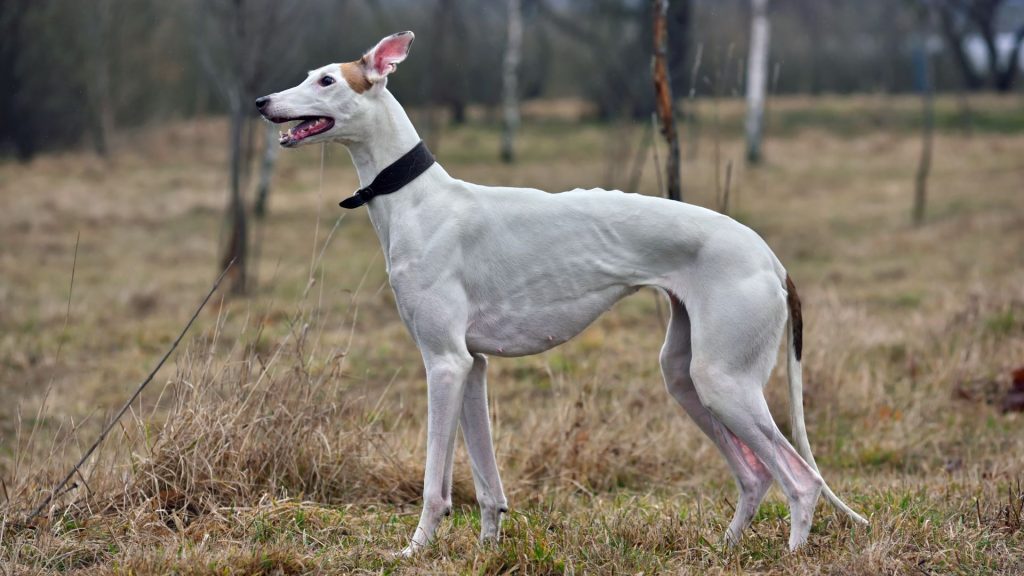
Tips for First-Time Owners of Tall Skinny Dogs
- Research Thoroughly: Learn about the specific needs and characteristics of the breed you’re interested in. Understand their exercise, grooming, and dietary requirements.
- Provide Regular Exercise: Tall skinny dogs are often high-energy breeds that require regular physical activity. Ensure you can commit to daily walks, runs, or playtime in a secure area.
- Invest in Training: Enroll in obedience classes to help with training and socialization. These breeds can be independent and sometimes stubborn, so consistent, positive reinforcement training is essential.
- Create a Safe Environment: Ensure your home is safe and secure. These dogs can be agile and may escape if not properly contained. A secure yard or a commitment to on-leash activities is crucial.
- Health and Grooming: Schedule regular veterinary check-ups and maintain their grooming needs. While many tall skinny breeds have low-maintenance coats, they still require basic grooming and health care.
- Be Patient and Consistent: Tall skinny dogs can be sensitive and may take time to adjust to new environments and training. Patience and consistency are key to building a strong bond and ensuring a well-behaved pet.
By carefully considering these factors and following these tips, you can choose the right tall skinny dog breed that will fit seamlessly into your lifestyle, providing you with a loyal and loving companion.
Caring for Tall Skinny Dog Breeds
Diet and Nutrition Needs
Tall skinny dog breeds require a balanced diet rich in protein to support their lean muscle mass. High-quality commercial dog food or a well-planned raw diet can meet their nutritional needs. Ensure the diet includes essential vitamins and minerals, and avoid overfeeding, as these breeds can be prone to weight issues if not properly managed.
Exercise Requirements
These breeds are typically high-energy and need regular exercise to stay healthy and happy. Daily walks, runs, or play sessions in a secure area are essential. Activities like agility training or lure coursing can also provide mental and physical stimulation. Despite their athleticism, they also enjoy relaxing at home, making a balance of activity and rest important.
Grooming Tips and Advice
Grooming needs for tall skinny dog breeds vary depending on the coat type. Breeds with short coats, like the Greyhound and Whippet, require minimal grooming, usually just weekly brushing to remove loose hair. Breeds with longer coats, like the Afghan Hound, need more frequent brushing to prevent tangles and matting. Regular baths help keep their coats clean and healthy.
Health Concerns Specific to Tall Skinny Breeds
Tall skinny dogs can be prone to specific health issues. Bloat, or gastric torsion, is a serious condition that affects deep-chested breeds. Feeding smaller, more frequent meals and avoiding vigorous exercise after eating can help reduce the risk. They may also be prone to joint issues, so maintaining a healthy weight and providing joint supplements can be beneficial. Regular veterinary check-ups are essential to monitor and manage these health concerns effectively.

Conclusion
Tall skinny dog breeds are known for their elegance, speed, and unique charm. From the ancient Greyhound to the noble Pharaoh Hound, these breeds offer a variety of characteristics and benefits. They require specific care, including a balanced diet, regular exercise, and appropriate grooming. Understanding their needs ensures a healthy, happy life for these graceful companions. If you’re considering adding a dog to your family, a tall skinny breed might be the perfect fit. Their gentle nature and striking appearance make them wonderful pets. Embrace the joy and companionship these remarkable dogs bring.
This outline will help structure your article to ensure it meets the 2500-word requirement while covering all essential aspects of tall skinny dog breeds.
Frequently Asked Questions (FAQs)
What are some common tall skinny dog breeds?
Some common tall skinny dog breeds include Greyhounds, Whippets, Salukis, Afghan Hounds, Borzois, Ibizan Hounds, and Pharaoh Hounds. These breeds are known for their sleek and elegant appearance, agility, and speed.
Are tall skinny dog breeds good with children?
Yes, many tall skinny dog breeds are good with children. Breeds like the Whippet, Ibizan Hound, and Pharaoh Hound are known for their friendly and playful nature. However, it’s essential to supervise interactions between young children and dogs to ensure safety for both.
Do tall skinny dogs need a lot of exercise?
Tall skinny dog breeds generally require regular exercise to stay healthy and happy. Breeds like Greyhounds and Whippets enjoy running and playing but also appreciate lounging at home. Daily walks, playtime in a secure area, and activities like agility training can help meet their exercise needs.
How much grooming do tall skinny dog breeds require?
Grooming needs vary among tall skinny dog breeds. Short-coated breeds like the Greyhound and Whippet require minimal grooming, usually just weekly brushing. Long-coated breeds like the Afghan Hound need more frequent grooming, including brushing several times a week and regular baths to prevent matting and tangles.
Are tall skinny dogs prone to health issues?
Tall skinny dog breeds can be prone to specific health issues, such as bloat (gastric torsion) and joint problems. Bloat is a severe condition that requires immediate veterinary attention, and feeding smaller, more frequent meals can help reduce the risk. Maintaining a healthy weight and providing joint supplements can benefit their joint health. Regular veterinary check-ups are essential for monitoring and managing these health concerns.

Hello, I’m Donna Carter, the founder and writer behind PetFleck.com. My journey with dogs started years ago, and it’s been a passion that has only grown stronger over time. I’ve always been fascinated by the unique behaviors and characteristics of different dog breeds, and this curiosity has led me to dive deep into the world of canine studies.
My love for dogs is the driving force behind everything I do. I’ve dedicated countless hours to researching and understanding the nuances of dog care, training, and breed-specific traits. This dedication helps me create content that is not only informative but also genuinely helpful for fellow dog lovers and owners.
At PetFleck, I combine my extensive knowledge and hands-on experience with my passion for dogs to provide valuable insights and tips. Whether it’s exploring different breeds or offering practical advice on dog care, I aim to share knowledge that makes a real difference in the lives of dogs and their families.
I’m thrilled to share my love for dogs with you through my writing. I hope my articles inspire and inform, helping you to better understand and appreciate the incredible bond we share with our furry friends.
Thank you for visiting PetFleck.com, and I look forward to connecting with you through our shared love of dogs!
